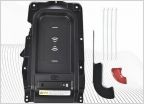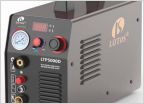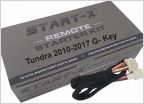-
Welcome to Tundras.com!
You are currently viewing as a guest! To get full-access, you need to register for a FREE account.
As a registered member, you’ll be able to:- Participate in all Tundra discussion topics
- Transfer over your build thread from a different forum to this one
- Communicate privately with other Tundra owners from around the world
- Post your own photos in our Members Gallery
- Access all special features of the site
Auxiliary power setup (aka dual batteries)
Discussion in 'Electrical' started by Jhon, Sep 21, 2024.


 Plug and Play Wiring Harness for a 2016 Tundra and Leer 100XL
Plug and Play Wiring Harness for a 2016 Tundra and Leer 100XL Wireless charging tray
Wireless charging tray Can I install a horn in the stock circuit?
Can I install a horn in the stock circuit? Has anyone install a external cd player using usb ?
Has anyone install a external cd player using usb ? Amazon Plasma Cutters....anyone?
Amazon Plasma Cutters....anyone? Plug and play remote start
Plug and play remote start
